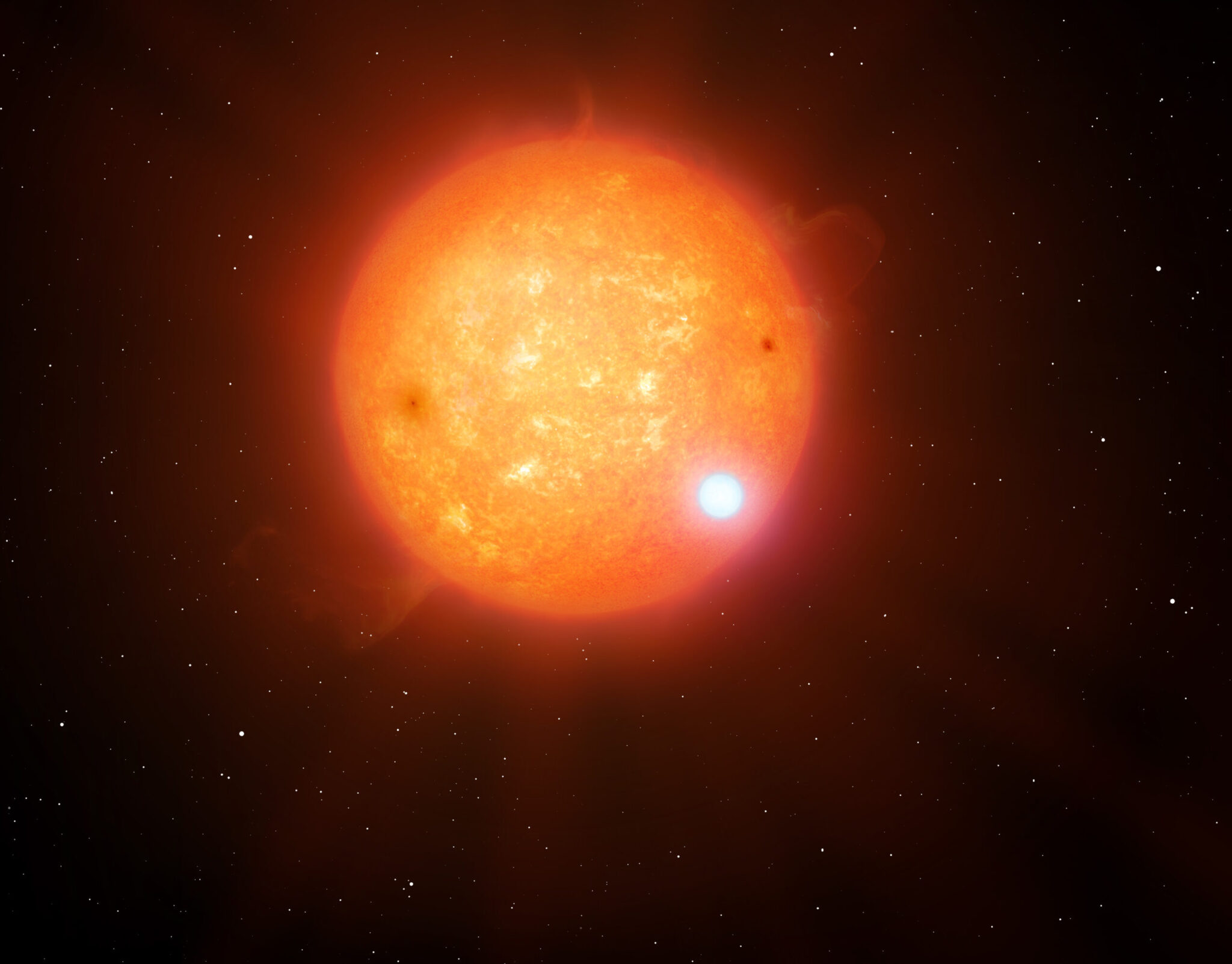Understanding the oldest stars in the Milky Way

An international team, led by a researcher from the Universitat Politècnica de Catalunya · BarcelonaTech (UPC) and the Institute of Space Studies of Catalonia (IEEC), has measured for the first time the stellar parameters of a very old kind of stars, known as cool subdwarf stars, in our Galaxy, the Milky Way. Cool subdwarfs are stars like our Sun, but of smaller mass and radius, which formed during the beginning of the Milky Way and, therefore, carry important information about its structure and chemical evolution. The work has been done in collaboration with researchers from the University of Sheffield and the National Astronomical Observatories, Chinese Academy of Sciences, and the results are published in the journal Nature Astronomy.
When the Milky Way formed, the first stars were mainly composed of hydrogen. Heavier elements than hydrogen or helium are considered as metals in astronomy and their presence determines the metallicity of a star. As time passed and stars died, the content of such metals in the Milky Way and in the new stars born increased. Therefore, old stars have lower metallicity than younger ones.
“Since old stars can reveal important information about the structure and the chemical evolution of the Milky Way, it is essential for astronomers to determine their most basic stellar parameters such as masses and radii”, explains the researcher from the UPC and IEEC Alberto Rebassa-Mansergas, who has led the study. Rebassa-Manserga is assistant professor and researcher at the Physics Department and a member of the Astronomy and Astrophysics Group of UPC.
Because old stars are faint and they are relatively rare in the vicinity of the Sun, few cool subdwarfs are known in our solar neighbourhood. Currently, the radius of only 88 and the masses of six cool subdwarfs have been estimated. However, no mass and radius values for the same cool subdwarf had been accurately measured, leaving the theoretical studies for such stars untested until now.
In their work, the researchers have found the first cool subdwarf in an eclipsing binary system , a system where two stars orbit one another, in this case, a cool subdwarf and a white dwarf[1]. When one of the stars passes in front of the other from our perspective on Earth, astronomers call this system an eclipsing binary system.
“Eclipsing binaries offer the opportunity to measure directly the masses and radii of the two components with unprecedented precision,'' argues Rebassa-Mansergas.
Using the HiPERCAM instrument mounted on the 10.4-meter Gran Telescopio CANARIAS (GTC), in La Palma (Spain), and the X-Shooter instrument on the 8.2-meter Unit Telescope 2 of ESO’s Very Large Telescope (VLT), in Chile, the researchers were able to accurately determine the masses and radii of the stellar components of the binary system. With these values, together with the temperature and the luminosity of the cool subdwarf star also obtained from the observations, the authors were able to validate, for the first time, the theoretical relations between the mass, radius, luminosity, and temperature for the oldest stars in our Galaxy.
Figure: Artist’s impression of the eclipsing binary system composed of the cool subdwarf (yellow) and the
white dwarf (white) stars. Credit: Mark Garlick.
Notes
[1] A white dwarf is the remnant of a star like our Sun.
Links
– IEEC
– UPC
– HiPERCAM
– GTC
– X-Shooter
– VLT
More information
This research is presented in a paper entitled “ Accurate mass and radius determinations of a cool subdwarf in an eclipsing binary ”, by Rebassa-Mansergas et al., to appear in the journal Nature Astronomy on 8 April 2019.
The Institute of Space Studies of Catalonia (IEEC — Institut d’Estudis Espacials de Catalunya) promotes and coordinates space research and technology development in Catalonia for the benefit of society. IEEC fosters collaborations both locally and worldwide and is an efficient agent of knowledge, innovation and technology transfer. As a result of over 20 years of high-quality research, done in collaboration with major international organisations, IEEC ranks among the best international research centers, focusing on areas such as: astrophysics, cosmology, planetary science, and Earth Observation. IEEC’s engineering division develops instrumentation for ground- and space-based projects, and has extensive experience in working with private or public organisations from the aerospace and other innovation sectors.
IEEC is a private non-profit foundation, governed by a Board of Trustees composed of Generalitat de Catalunya and four other institutions that each have a research unit, which together constitute the core of IEEC R&D activity: the University of Barcelona (UB) with the research unit ICCUB — Institute of Cosmos Sciences; the Autonomous University of Barcelona (UAB) with the research unit CERES — Center of Space Studies and Research; the Polytechnic University of Catalonia (UPC) with the research unit CTE — Research Group in Space Sciences and Technologies; the Spanish Research Council (CSIC) with the research unit ICE — Institute of Space Sciences. IEEC is integrated in the CERCA network (Centres de Recerca de Catalunya).
Contacts
IEEC Public Information Office
Barcelona, Spain
Rosa Rodríguez Gasén
E-mail: comunicacio@ieec.cat
Lead Scientist
Barcelona, Spain
Alberto Rebassa Mansergas
Physics Department, Universitat Politècnica de Catalunya · BarcelonaTech
E-mail: alberto.rebassa@upc.edu
